World Fine Art Professionals and their Key-Pieces, 115 - Hans Rietbergen
World Fine Art Professionals and their Key-Pieces, 115 – Hans Rietbergen
When I ring the bell at Hans Rietbergen’s home at Beeklaan The Hague, near the former home of Willem Drees, the Dutch prime minister in the fifties, he takes me right back into the street. Do I want to participate in his big photo project ‘Langslopers’ (Passersby), he asks. Of course.
Against the background of the soft orange wall at the opposite his house he captures me. “You’re photo #1980, twenty to go and I’ve done 2000, after more than seven years.” Many residents of The Hague have preceded me, including former mayor Jozias van Aartsen. The word ‘photogenic‘ does not exist, says Rietbergen.
He has categorized all portrayed persons. Besides fathers and mothers with children: pregnant women, joggers and athletes, students, dog walkers, Beeklaan residents, visitors or staff of the Willem Drees House, street sweepers, technical workers, people in various uniforms, newspaper and advertising deliverers, money collectors, postal workers, artists, musicians, redheads and movers. ‘Time Image of Human Beauty’. “There is an inexhaustible number of ways to give shape of it, always interesting: visual, expressive, communicative, psychological, and so on.”
East Europeans
Summer 2014 a book with a selection of 488 (his house number) of the first 1000 photos was published, titled ‘The Postman Said No’. There have been exhibitions, including in Pulchri and De Nieuwe Regentes. For photo #2000 he had already a well-known person in mind. The large number of passers-by with a non-Dutch nationality is striking. There are people from more than 60 countries. After the Dutch the second largest group is from Poland, then French, Russians, Americans, and so on.
Rietbergen seems to have a special relationship with Eastern Europe. “I feel a closeness to those people, a kind of soul relationship. Where it comes from? Maybe because they seem to be underdogs to me.”
The first
A little later I’m in the studio, on the first floor. There’s a drum kit, guitars and on the easel a work in progress, behind that large format canvases. On the floor are boxes with folders and photo books, several paintings, and above me – I sit on the couch – hang smaller and larger paintings with special meanings.
Rietbergen’s first painting is there. It is called ‘The very first’ and signed with ‘Hans’ with right above a curly R in the form of an at sign. “I was 12 and loved to draw and color. ’Mom, I want to be an artist’, so basically I’m an artist for nearly all my life …!” He got a paint box from Santa-Claus. His mother was also artistically gifted. This can be seen in another work that hangs above the couch, above Rietbergen’s first artwork. It’s her childhood drawing titled ‘Ducklings’, made in 1932. “She was 16, she became 98. When 80-year-old she was even making watercolors on her knees. She took it hundred percent serious. There were also artbooks at home, including one on Karel Appel and Picasso, my heroes of the first hour.“
His father was more of a music man. The drums and the guitars in the corner are witness that there is also transferred something of that side in Rietbergen’s mind. But art always had the upper hand. Hans went to the Royal Academy of Art, direction Graphic Design. Typography and advertising design were important subjects. He thought it was fantastic, especially with a teacher as Max Velthuijs, the creator of Kikker (Frog).Royal Academy twice
By day he worked and in the evenings and weekends he did his studies. For 25 years he was engaged in a number of Hague advertising studios with the design of logos, magazines, ads, photos, illustrations, text and layout. “Wonderful. I really made everything except stamps and banknotes.” Rietbergen again felt the need to master more aspects of the arts and followed drawing and painting courses, where he was engaged with model-, portrait-, and free painting and drawing.
He went for a second time to the Royal Academy, from ’94 to ’98 for the direction Drawing, Painting and Graphics. “On the advice of artist / former teacher Jan van Spronsen. He had the right view.” In that period he made his second key work – the first is the aforementioned ‘The very first’. He points at it. I see a painting of a dark bedroom, in the middle a radiating kind of angel, head bowed, long blond hair. Behind the angel is a full bookcase. At right a bed can be distinguished, toes stabbing from under a blue blanket.
Guardian Angel
“At the Academy we had been given a new assignment: ‘Paint your Guardian Angel’. It went through his head, how will I tackle this? But a strong reminder surfaced … “In the middle of the night I woke up because I heard my name, I was shocked really and suddenly a white ‘Appearance’ stood next to my bed. It was the early night of March 30, 1989, I will never forget it. The white appearance with long blond hair. I was in total panic. It was a very intense experience, actually the third in my life besides the birth moments of my two daughters.” He put it down in a painting. “Some people think the appearance was Van Gogh who came to encourage me. Three years after that overnight sensation I discovered by coincidence that March 30 is the birthday of Vincent … That’s why I added a self-portrait from Paris in a corner. It still feels like it all happened last week.” In 2011, it also led to an installation, including 37 blonde portraits, which, unlike the angel, showed a portion of their face.
Since the seventies Rietbergen was under the spell of Vincent van Gogh’s work and life. He bought one book after another, and when the latest version of the Van Gogh’s letters appeared, he bought it immediately. In one of the bookcases are not less than 350 Van Gogh books. In one corner of the working wall hangs a portrait of Rietbergen: pensive on a stool in the corner of the room in Auvers-sur-Oise (north of Paris) where Van Gogh died when he was 37. “With a trick I was able to make a photo, because you won’t go all the way up there in one day and end up with empty hands!”
“The year 1990 was named the ‘Van Gogh Year’. The Hague Historical Museum obviously also made an exhibition, about the Hague period of Van Gogh. As a volunteer at the museum I could help with the set up. I did it in break time of my work and at evenings. At one point, when I was alone in a room with the Parisian self-portrait, I couldn’t resist to touch for a moment the paint of that portrait (15 million worth).” Before that year, in 1988, at the first painting course of the later ‘Koorenhuis’, he immediately made a work of three meters wide. “Through the painting courses I began to master the most important techniques, I saw no limits anymore, I should have done it 20 years earlier. It was a great catch up race!” Also many other artists and movements from art history proved to be inspiration: impressionism, expressionism, symbolism, religion, and music.
Ellen ten Damme
The third key work: Ellen ten Damme in the series ‘people on benches’. Rietbergen has a good relationship with the versatile actress / performer. In the background of the painting you can see her head. And right above she floats back to success (she had been very ill). It’s a large work of 1.50 to 1.80 meters. On the back of the bench Ten Damme wrote in graffiti letters the title ‘Nothing is Impossible’.
In addition, there is also a smaller portrait of Van Damme of 50 to 50. Both of them ‘arrived’ well finally. The bench project is one of the many projects that Rietbergen started and increased and documented steadily. Rietbergen: “The very beginning is a super romantic Italian painting of Vittorio Corcos, ‘Sogni’.” Since then there grew a series of people on benches, including a photo of René Haakman, about whom we wrote earlier, in Park Sorghvliet (2010, photo collage of the 21 benches with visitors).
Key work number four: ‘Langslopers’ (Passersby). See the beginning of this story. All pictures are in folders of 100. The first 1000 photos are analogue and the second thousand digital. An inspiring passerby was a very old man he had seen weekly in late 2007 from his window. Piet de Ridder is his name. He was always on the way to the Dr. Willem Drees House, a little further down the street, to entertain the elderly with his piano playing. Only after a year and a half the series really started with photo No. 1: a young mother from Ukraine with her baby in a stroller, August 2009. And then the series really started off. After one year, there were a hundred, nine months later two hundred. On some summer days, he shot twenty pictures. And now we have already passed 2000! “At first I thought to make at most 25 …”
Gerard Fieret
Behind the easel is also a yet unfinished portrait of the photographer / pigeon feeder Gerard Fieret. “He was laid in his coffin. That farewell evening I have made a drawing of him on impulse. I had 100 copies made and placed on a table at his funeral. In no time they were gone. More or less the same I did at the death of my favorite actress Wil van Kralingen. My 50 x 65 drawing stood beside her coffin. I have made many Tributes and paintings of deceased persons: my father, family, neighbours. At the funeral of Gerard Fieret, January 2009, I was a little too late. I had actually wanted to put an old camera on his chest, but did not dare. After the ceremony and the coffee I went back to the grave with that camera. Suddenly an excavator emerged. The coffin was already well into the depths. I had to lie on my stomach to allow the camera to come down to the coffin. And when the camera was there, the machine continued. You could say that I happened to be at the actual funeral of Fieret. I do what comes to me, my spontaneity virtually has no limits.”
And also Rietbergen’s energy seems to have no real limits. He also has a series of 1400 self-portraits, which he started in 1964. He makes most of them with a mirror. There are more photo series: for example people with red coats (for a project about the color red), mannequins, cemetery sculptures, redheads. Almost daily he draws and writes in empty dummies. There are now 67. He picks one of them and let me watch. Texts and drawings, such as his own ‘yellow house’, a left ear, the girl with the pearl. Beautiful drawings and texts in large letters, a personal handwriting. “I capture what I experience and what I feel. It’s done pretty fast. In one way or the other it’s a necessity. There’s no other way for me.” His artworks always have a title, words are important, even in his poems of recent times. Exhibition spots he usually organizes himself, and he participated in many Art Routes.
Wealth and sometimes poverty
Finally, what is his artistic philosophy? “It’s very nice, fine and good and above all necessary to keep yourself busy with the craft that is called Art in a very natural way. In whatever form. It is wealth and sometimes poverty at the same time if the work does not seem to get enough attention.”
Images: 1) Hans with Peace Profound, 10 x 15, 2) Very first painting, 24 x 30, 3) At night, March 30, 1989, 75 x 100, 4) C’est Moi, 46 x 90, 5) Nothing is impossible, 150 x 170, 6) Walter passerby #1980, 10 x 15, 7) Gerard Fieret, 10 x 15, 8) Blue, Blanc, Rouge, 80 x 100, 9) Lack of proximity, 150 x 230, 10) Art Consumption, 80 x 60
http://bit.ly/2j3cGFy http://bit.ly/2if9PMt http://bit.ly/2iiQPYx
http://ifthenisnow.eu/nl/verhalen/de-wereld-van-de-haagse-kunstenaar-62-hans-rietbergen
Disclaimer: The views, opinions and positions expressed within this guest article are those of the author Walter van Teeffelen alone and do not represent those of the Marbella Marbella website. The accuracy, completeness and validity of any statements made within this article are not guaranteed. We accept no liability for any errors, omissions or representations. The copyright of this content belongs to Walter van Teeffelen and any liability with regards to infringement of intellectual property rights remains with the author.

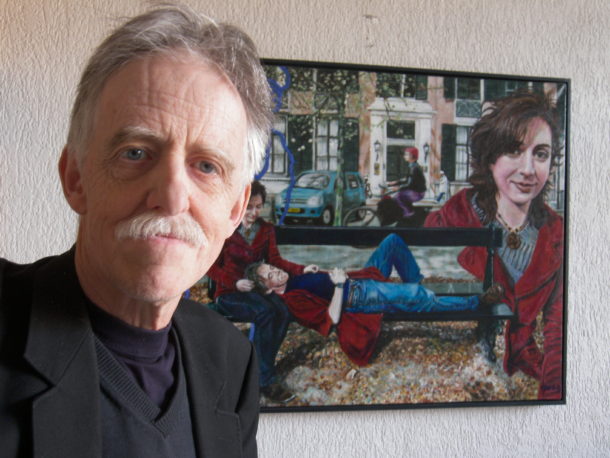
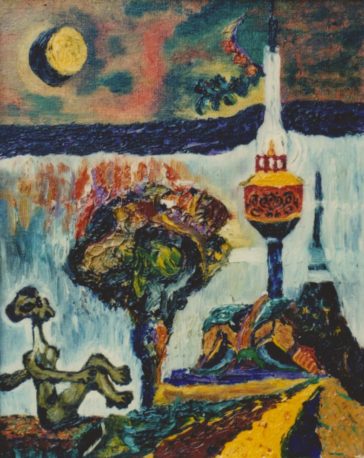
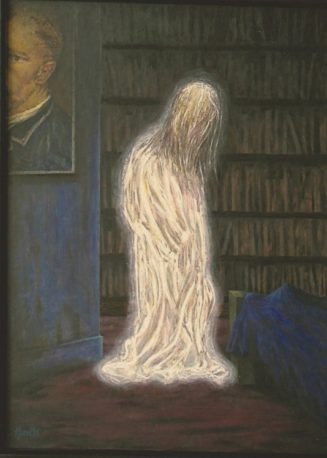
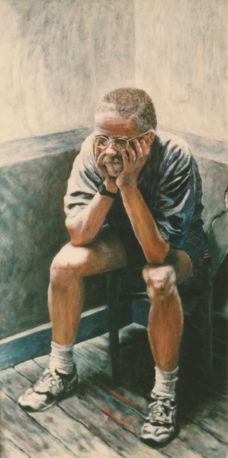
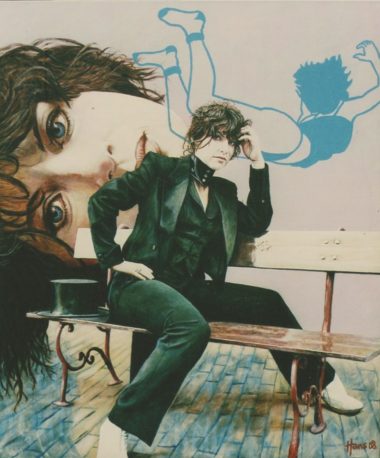


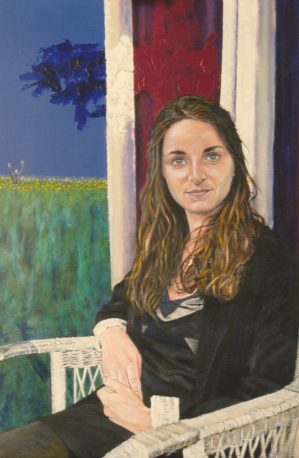
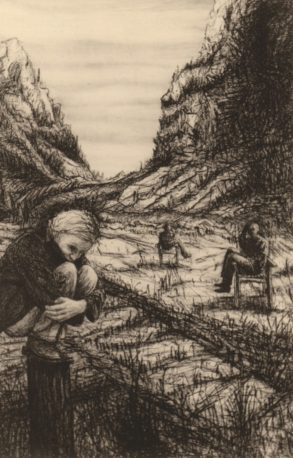
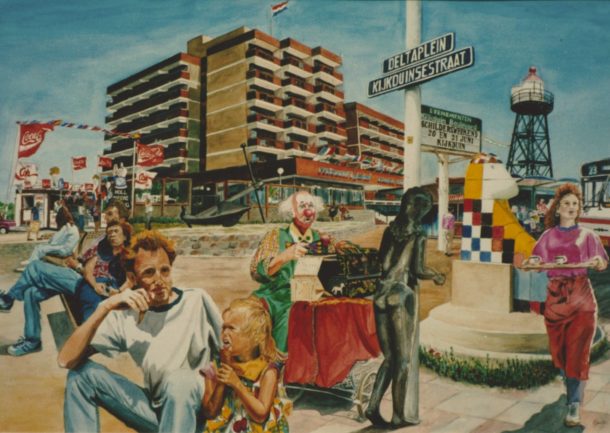














The opinions expressed by individual commentators and contributors do not necessarily constitute this website's position on the particular topic.